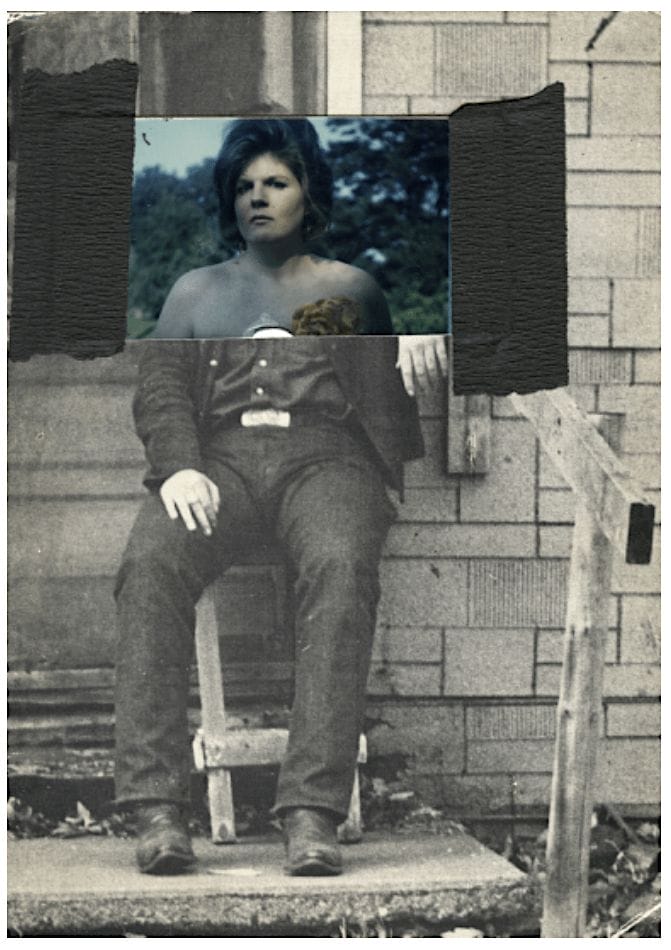“You don’t call yourself an ‘artist’ – if others want to, that’s up to them.”
— Brigid Berlin
In the New York art scene of the mid-1960s and early ‘70s, Brigid Berlin achieved the rarest of feats by becoming an essential member of both of the two opposing spheres of the downtown creative classes gathered at Max’s Kansas City, the definitive watering hole of the avant-garde. She was a fixture in the queer délire of the back room, where Andy Warhol held court among his Factory Superstars, drag queens, and other hangers-on. At the same time, Berlin was equally welcomed by “the heavies” in the front of the bar: the mostly male, infamously macho crowd of carousing artists that included Willem de Kooning, John Chamberlain, Larry Rivers, Donald Judd, Robert Rauschenberg, Richard Serra, James Rosenquist, and Brice Marden, among others. Berlin not only penetrated these distinct precincts of the clubby art establishment, but conspired with them, occasionally collaborating on artworks, and even going so far as to turn them into muses for her own polymorphic, deeply conceptual oeuvre. Brigid Berlin was one of them: an artist on equal footing, the heaviest of the heavies.
To be deemed “a heavy” by her fellow artists was the ultimate confirmation of Berlin’s artistic identity. Yet given her origins as the daughter of Honey Berlin, an illustrious socialite, and Richard E. Berlin, conservative head of the all-powerful Hearst media empire who had Nelson Rockefeller and Richard Nixon on speed-dial, Brigid’s unlikely trajectory toward membership in the downtown demimonde is particularly remarkable. Throughout the 1960s, she categorically rejected her parents’ expectations, shunning their gilded Fifth Avenue bubble and its behavioral and gendered strictures in favor of a life of defiant bohemian experimentation that continues to fascinate and reverberate today.
Opening at Vito Schnabel Gallery’s Clarkson Street space on June 23, 2023, Brigid Berlin: The Heaviest is the first exhibition ever to document all aspects of the artist’s life, shedding light on the full scope of her career beyond the shadow of her famous friend and mentor Andy Warhol.
Organized by noted independent curator, critic, and author Alison M. Gingeras, The Heaviest will be presented in a dense, totalizing environment inspired by the unique atmosphere of Berlin’s apartment. The exhibition traces the artist’s trajectory from her exceptionally privileged childhood to her Warholian stardom in the 1960s and ‘70s; to her multi-tentacled exchanges with a noteworthy array of artists through the 1980s and ‘90s; to the more reclusive and reflective years at the end of her life and up to her death in 2020. In addition to works of art by Berlin, The Heaviest will present an array of documentary materials, including never before seen family photographs, letters, and memorabilia.
Also on view will be portraits of the artist made by her peers, as well as posthumous homages to Berlin’s legacy created for the exhibition by a handful of contemporary artists.

In drawing together this wealth of material for viewing, reading, and listening, The Heaviest argues for a precise reconsideration of Berlin’s stature as more than a minor artistic footnote or colorful Warholian acolyte. In a very specific moment of the New York art world that was still dominated by the cult of male genius, andwell before the feminist art movement of the early ‘70s had gained full steam, Berlin naturally measured herself against the so-called “great men.” Yet in spite of her “being just one of the guys,” she forged a singular path as a radical artist who asserted her sexual agency and body positivity in ways that precociously prefigured similar themes by subsequent generations of women artists.
Furthermore, Berlin’s oeuvre hinges on her engagement with performance and the performative, her fearless embrace of queerness, and sustained interest in subverting all forms of the social status quo despite her arch-conservative origins. By casting a brighter light on the complexities and contradictions of Berlin’s life and work, The Heaviest argues that while Berlin turned her back on her rich bohemian period later in life in order to reconcile herself with the ghost of her parents’ disappointments, she left behind a significant and impactful body of work. With the posthumous revelation of her vast and relatively little-known audio archives, The Heaviest makes the case that Brigid Berlin’s complex legacy merits further study.
Exhibition details
The irony of being counted among “the heavies” by her art world compatriots would not have escaped Berlin: for decades she was defiantly open about her struggles with her weight. From a young age, Berlin’s mother fed her amphetamines so that she might conform to the impossible slenderness required of high society girls, including art directed “snapshots” that the Berlin family made with the help of the Hearst Media empire—attesting to her unusual childhood milieu. A needlepoint pillow Berlin crafted decades later with the slogan “It Is About the Weight” testifies to how this unrelenting pressure to be thin haunted the artist for the entirety of her life and catalyzed the rebellion that would fuel her oeuvre. While she refused to kowtow to her mother’s body shaming dictates, Berlin’s use of speed followed her downtown, where she became known as “Brigid Polk” for the syringe pokes of methamphetamine she administered to herself and those around her. After exiling herself from the stifling world of the Upper East Side, she became a fixture at Andy Warhol’s Silver Factory (Berlin met Warhol in 1964, and the two were famously lifelong best friends); there she underwent her artistic becoming.
Also nicknamed “The Duchess” in deference to her blue-blooded origins, Berlin quickly distinguished herself as more than just a scenester in the Warholian orbit. As the breakout star of the film Chelsea Girls (1966), playing a lesbian drug dealer who dominates her eccentric neighbors at the Chelsea Hotel, Berlin became an instant cult sensation. Her voluptuous body and verbose confidence made her an imposing figure among the Factory Superstars, with Warhol proclaiming, “Brigid’s the best thing in the movie.” In fact, Berlin’s corporeal heaviness became a central trope in her own work as she began making art—and evolving into “a heavy.”
“I use my breasts as a paint brush,” Berlin explained of the body art that was among her initial forms of art making. The Heaviest includes a number of her signature ‘Tit Prints,’ along with self-portraits and photos of Berlin by various artist friends, including Billy Name, Pat Hackett, Shunk-Kender, Kate Simon, and Bob Colacello.

By 1968, Berlin had come to embrace the Polaroid camera and the tape recorder as primary tools in an obsessive documentary practice that would continue for many years to come. She carefully assembled her photographs in black leather-bound books, every volume filled with meticulously arranged photographs of various subjects as well as self-portraits. Each of these books was embossed with a title in gold. The Artists. Drella (Warhol’s Factory nickname, a mash-up of Dracula and Cinderella). Mr. and Mrs. Pork (another sobriquet that Berlin and Warhol cranked up for themselves). Alice Neel Andy Warhol (a documentation of the infamous sitting in which Warhol bared his scars for the elder). And so on. Tellingly, Berlin titled one of these volumes The Heaviest. Several of her photo books will be featured in the exhibition.
In the early 1960s, it was Berlin who first introduced Andy Warhol to the new audio cassette medium and the Polaroid camera. Just as obsessively as she photographed, Berlin recorded on cassette tapes capturing for posterity fights with her parents, conversations with artists at Max’s Kansas City, daily calls with Andy Warhol and other friends, as well as her infamous monologues. Her audio archives include over 1,000 hours of recordings, comprising hundreds of thousands of linear feet of audio tape, with the majority dating from 1969-1974 and a smattering from later decades. The most consequential people of the time in art, music, popular culture, politics, and poetry are featured in Berlin’s audio archives, reflecting both the downtown cultural zeitgeist and the atmosphere in corridors of establishment power during a crucial chapter of American history. Always known as a great talker, Berlin elevated her loquacity into the substance of her art. The Heaviest will include a display of her tapes and will also offer a sampler of brief takes from them, available at a listening station in the exhibition. (This sound piece has been compiled by Pat Hackett and Rob Vaczy, the owners of Berlin’s audio copyrights and archive).
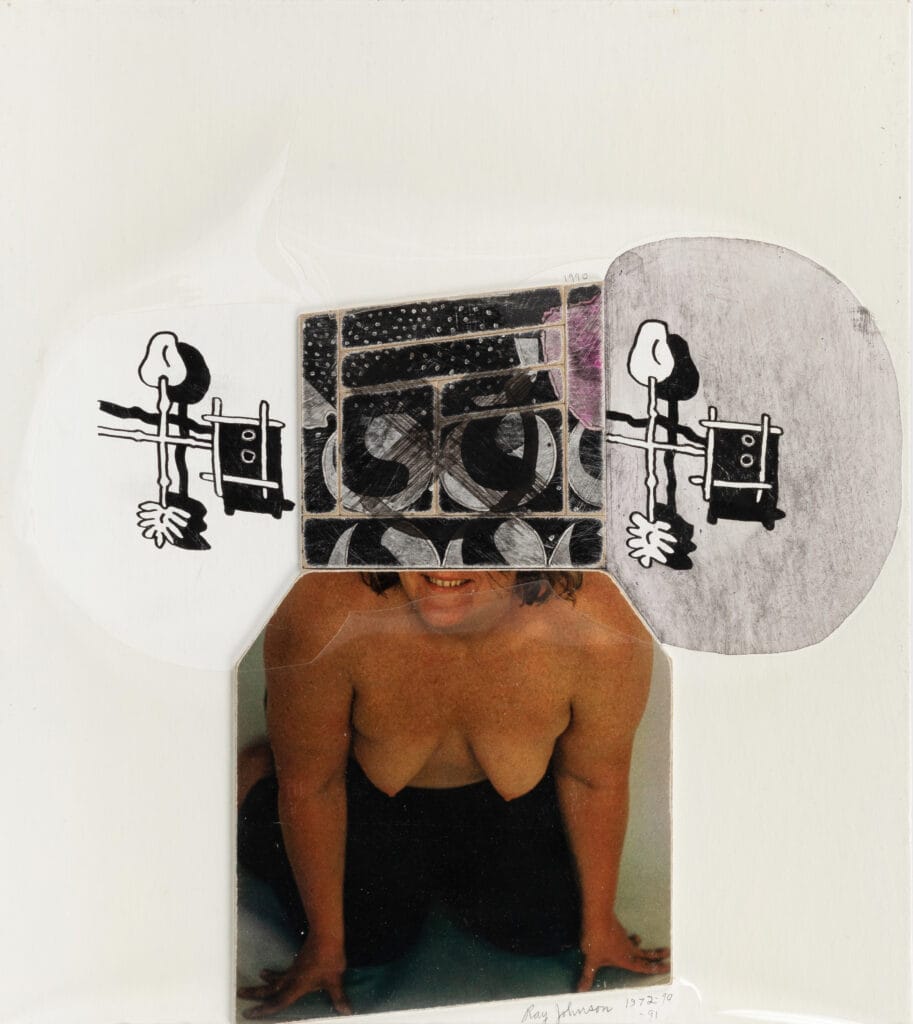
In 1970, Berlin was offered an exhibition at the prestigious Heiner Friedrich Gallery in Cologne, Germany. Her first solo outing as an artist in her own right, this show featured her audio tapes and Polaroid photographs. Half a century later, Brigid Berlin: The Heaviest will be the first exhibition since the Cologne presentation to spotlight her recordings. Writing about the watershed experience in West Germany, Berlin inscribed in her diary:
I really get excited as hell when I think that I have a few moments of Jasper Johns on tape. I believe those few moments are as big as the biggest American Flag he has ever painted. Those moments belong to me, and he said the words that become those moments…Artists excite me. Every time I meet a new one, I’m thrilled that I know one more! It’s like having one more painting or one more piece of sculpture. I respect them. And I think they taught me to respect myself.(Polaroid book, p. 201-2)
It was at this time that Berlin met and befriended Gerhard Richter. She gifted him several of her Polaroid self-portraits, which he later enshrined in his photographic archive, Atlas, and used as the basis of six portraits of Berlin that he painted in 1971. Correspondence between Berlin and Richter over the years is included in The Heaviest.
In addition to the photo books from this period, The Heaviest will present a selection of individual framed Polaroids taken by Berlin documenting her rich cultural network. Candid shots, many taken at Max’s Kansas City, feature artists Willem de Kooning, Larry Rivers, Richard Hamilton, Richard Avedon, John Chamberlain, Robert Rauschenberg, Jasper Johns, Merce Cunningham, Jonas Mekas, and John Giorno, among others. Echoing the relationships that underpin arranged vitrines with ephemera, mail art, and letters that Berlin exchanged with many of her peers, as well as a collection of postcards she sent to and received from a swath of luminaries.
These are the material traces of her astonishingly diverse relationships and influence upon a cross-section of the cultural realm. The Heaviest also features a number of portraits of Berlin by her artist friends, including two drawings by Larry Rivers (1968 and 1977) and a previously unknown collage by Ray Johnson from 1972. Berlin’s Polaroid photographs also document her fellow Factory denizens—Gerard Malanga, Nico, Viva, Jane Forth, Candy Darling, Jackie Curtis, Lou Reed—and, of course, her intimate connection with Andy Warhol. Often credited as a forerunner of the selfie, Berlin’s photographs of herself include a number of the artist’s signature double-exposure images.
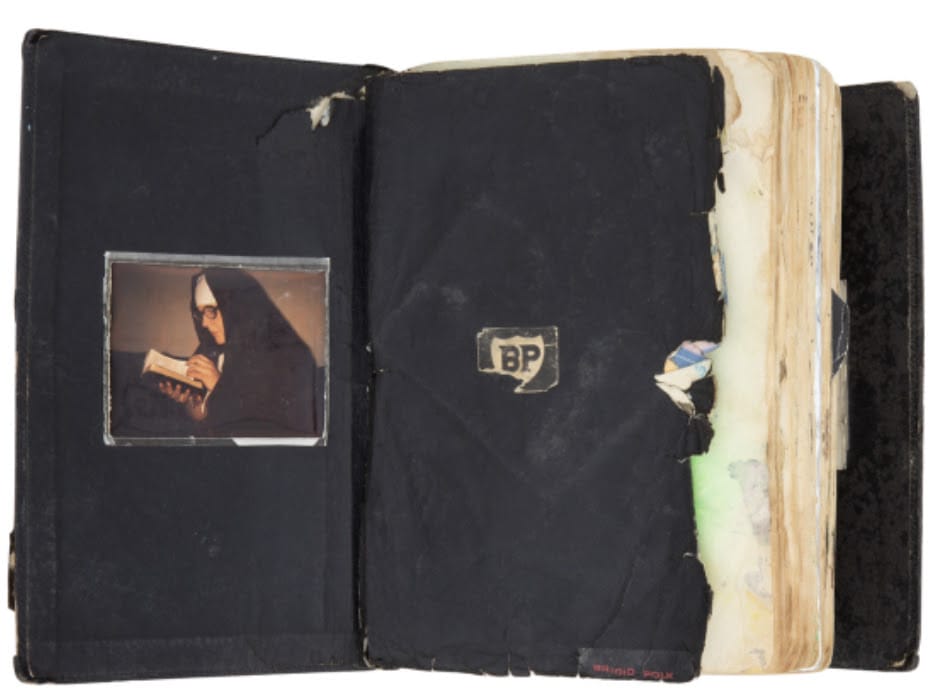
Contemporaneous with her obsessive audio and photographic recordings, Berlin used her body to make paintings she dubbed ‘Tit Prints.’ Often photographing herself topless and appearing with brazen exhibitionism in Warhol’s films, Berlin used her own body as a central subject of her art. The Heaviest features a key segment of Larry Rivers’ groundbreaking film Tits (1971), in which Berlin delivers a monologue about her childhood, her early sexuality, and how her body, specifically her breasts, became such an important topic for her work.
Male body parts were also one of Berlin’s preoccupations, as evidenced by her infamous Cock Book, in which she asked various male artists and personalities to draw their penises. Between 1968 and 1974, Berlin carried around a blank notebook with a leather cover embossed with the words “Topical Bible.” Berlin’s Cock Book contains penis prints, collages, drawings, paintings, photographs, and notations from an astonishing range of figures, including Brice Marden, Jean-Michel Basquiat, Dennis Hopper, Cy Twombly, Billy Name, James Rosenquist, Ray Johnson, Cecil Beaton, Robert Smithson, Fred Hughes, Gerard Malanga, Taylor Mead, Viva, Ondine, Nico, Ultra Vivid, Jane Fonda, Sylvia Miles, David Bailey, Jackie Curtis, and Stacy Keach, among others. After filling the Topical Bible, Berlin made other spin-offs, including The Poet’s Cock Book, Andy’s Cock, and Ned’s Nice Number (all included in the exhibition), The Scar Book, The Tit Book, and The Tear Book.
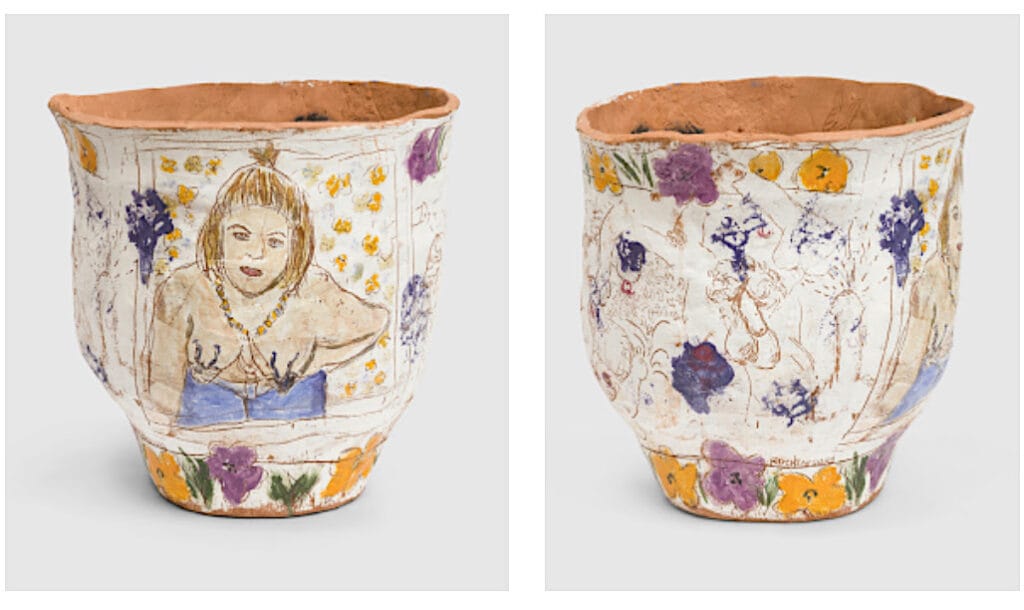
After Warhol’s death in 1987, and with the winding down of the Factory where she held a regular clerical position for most of her adult life, Berlin slowly moved toward a seemingly more conventional existence. She relocated to a gracious apartment in Murray Hill after living for years in a hotel room-cum-studio at the George Washington Hotel. She began to embrace the aesthetics of her childhood; her frequently photographed apartment was filled with chintz patterns and effigies of her beloved pugs. She dramatically lost weight and had herself photographed in her mother’s evening gowns.
While Berlin was the subject of a documentary by Vincent and Shelly Fremont entitled Pie in the Sky: The Brigid Berlin Story, (2000) her later years appeared to be a return to her family’s conservative roots. Even so, she continued makingart. In the 1990s, Berlin gave several spoken word performances and exhibited needlepoint works in which she often transformed lurid tabloid newspaper covers into meticulously crafted art. The Heaviest features a number of these works, along with a handful of previously unknown projects she made with her long-time companion Rob Vaczy, who, at Berlin’s direction, digitized her entire audio archives.
Inspired by Berlin’s apartment, the exhibition’s installation design features the bespoke floral Twigs wallpaper she lived with until her death at the age of 80, as well as a posthumously realized wallpaper piece based on the annotated “J-cards” of her audio cassette archive. The oppositional aesthetics of the uptown floral pattern and the grungy handwritten audio annotations perfectly encapsulates the unique path and deep contradictions of Berlin’s life and art.
A handful of works by artists in homage to Berlin conclude the exhibition. Among these are pieces from Scott Covert’s series of “monument paintings” that are made from oil-stick rubbings of Berlin’s gravestone; Los Angeles-based artist Jennifer Rochlin’s large-scale narrative ceramic pot painted with images from Berlin’s life; Italian artist Elisabetta Zangrandi’s series of intimate paintings based upon Polaroids of Berlin; and new portraits of Berlin by Francesco Clemente and Jane Kaplowitz, among other artists.
Brigid Berlin: The Heaviest is organized in collaboration with the co-executors of Brigid Berlin’s estate, Vincent Fremont and Rob Vaczy.
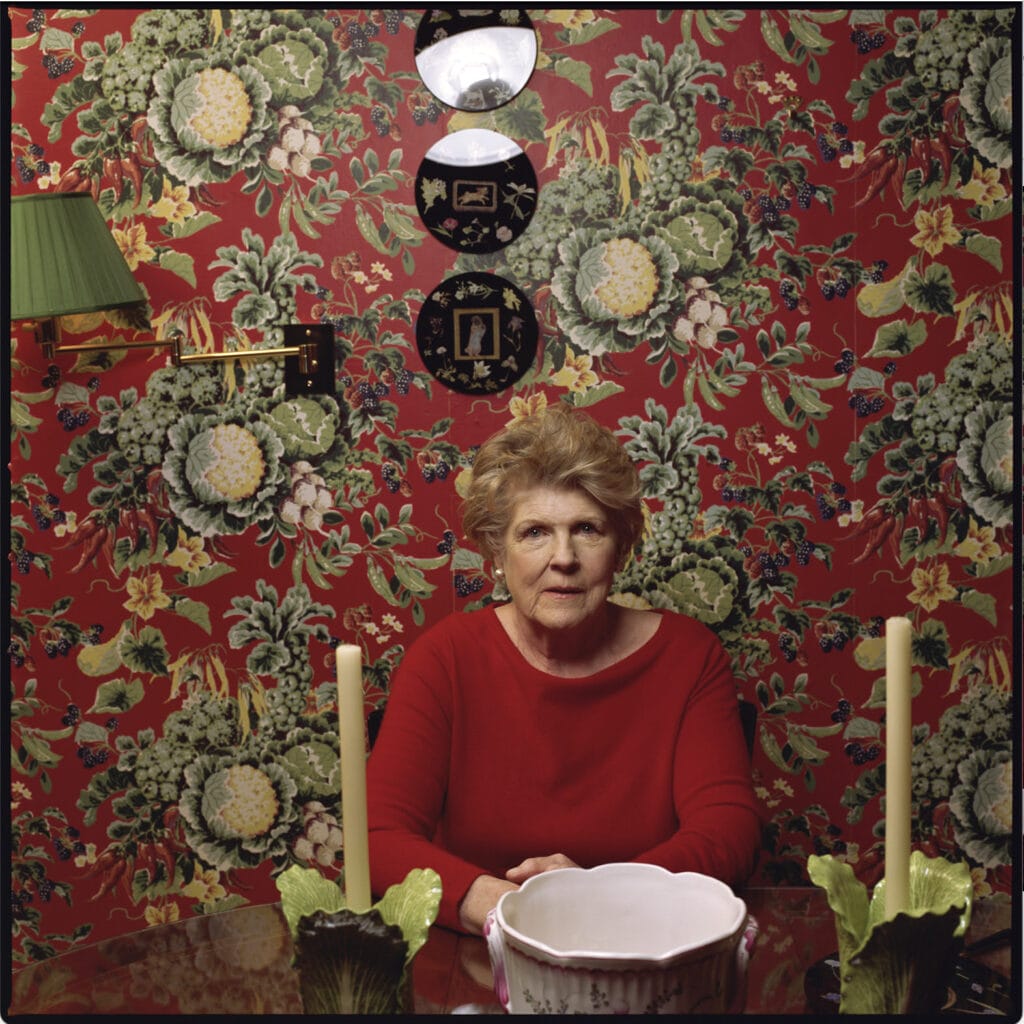
Vito Schnabel Gallery
43 Clarkson St #1A, New York, NY 10014, United States
